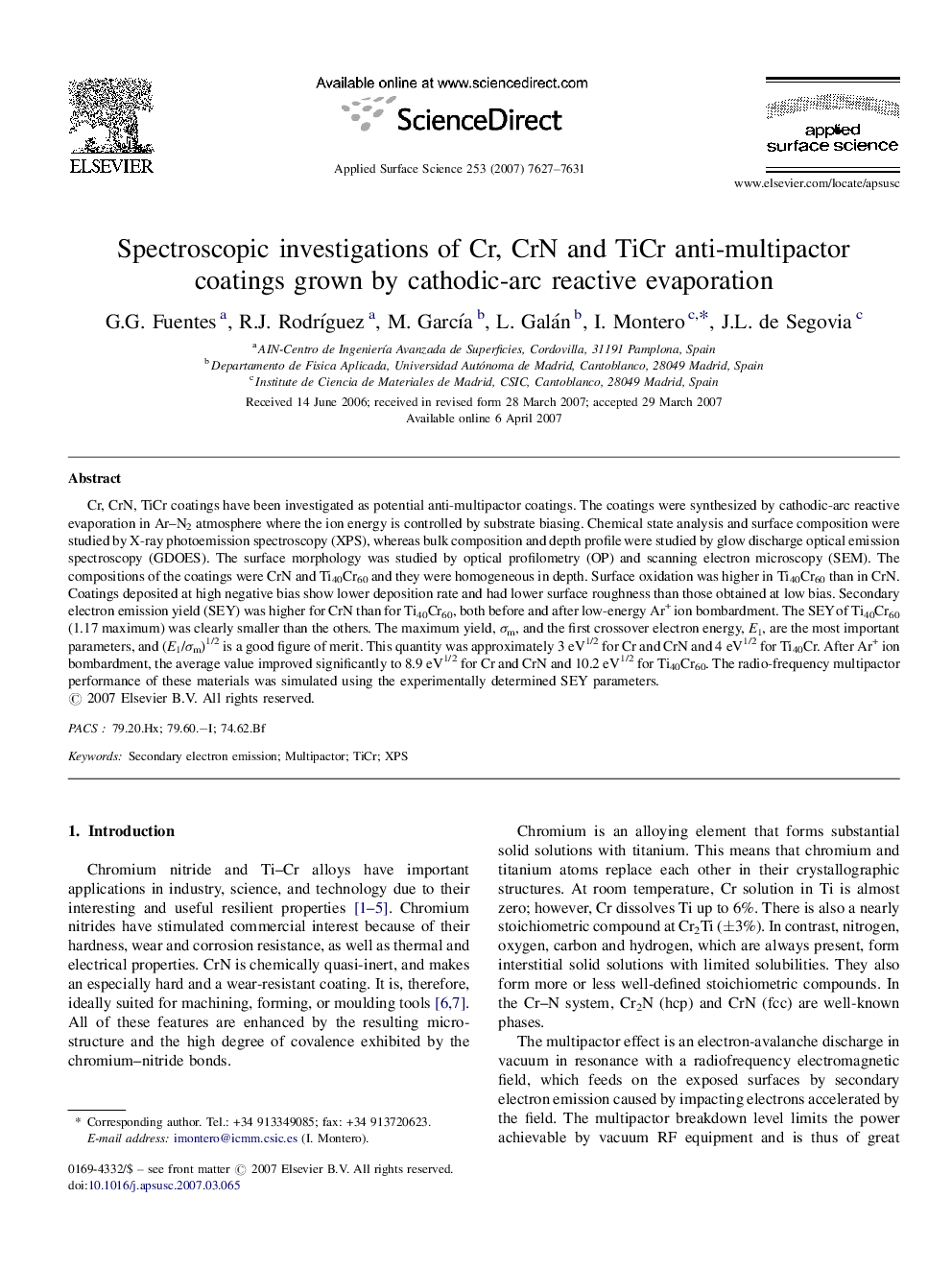| Article ID | Journal | Published Year | Pages | File Type |
|---|---|---|---|---|
| 5369695 | Applied Surface Science | 2007 | 5 Pages |
Cr, CrN, TiCr coatings have been investigated as potential anti-multipactor coatings. The coatings were synthesized by cathodic-arc reactive evaporation in Ar-N2 atmosphere where the ion energy is controlled by substrate biasing. Chemical state analysis and surface composition were studied by X-ray photoemission spectroscopy (XPS), whereas bulk composition and depth profile were studied by glow discharge optical emission spectroscopy (GDOES). The surface morphology was studied by optical profilometry (OP) and scanning electron microscopy (SEM). The compositions of the coatings were CrN and Ti40Cr60 and they were homogeneous in depth. Surface oxidation was higher in Ti40Cr60 than in CrN. Coatings deposited at high negative bias show lower deposition rate and had lower surface roughness than those obtained at low bias. Secondary electron emission yield (SEY) was higher for CrN than for Ti40Cr60, both before and after low-energy Ar+ ion bombardment. The SEY of Ti40Cr60 (1.17 maximum) was clearly smaller than the others. The maximum yield, Ïm, and the first crossover electron energy, E1, are the most important parameters, and (E1/Ïm)1/2 is a good figure of merit. This quantity was approximately 3Â eV1/2 for Cr and CrN and 4Â eV1/2 for Ti40Cr. After Ar+ ion bombardment, the average value improved significantly to 8.9Â eV1/2 for Cr and CrN and 10.2Â eV1/2 for Ti40Cr60. The radio-frequency multipactor performance of these materials was simulated using the experimentally determined SEY parameters.
